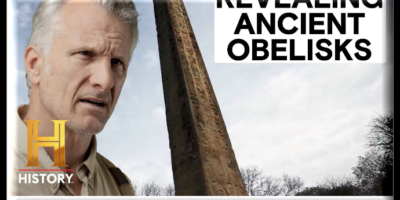Little girl found in 19th century casket identified

Unveiling the Past: Edith Howard Cook, the 19th Century Mystery Girl Found in a San Francisco Casket
In a remarkable discovery that sent echoes through time, a little girl, perfectly preserved in a 19th-century glass casket, has been identified beneath a San Francisco home. Unearthed from the mysteries of the past, this poignant tale introduces us to Edith Howard Cook, a 2-year-old who met her untimely demise in 1878.
The Discovery:
The journey began when a renovation project beneath a San Francisco residence led to the unexpected discovery of a small, ornate casket containing the remarkably preserved remains of a child. The enigma surrounding this little girl piqued the curiosity of historians and researchers, setting the stage for a captivating investigation into her identity.
Edith Howard Cook: A Glimpse into the Past:
Born in 1876, Edith Howard Cook lived during a period of profound societal and cultural changes in the United States. The late 19th century was marked by industrialization, westward expansion, and the aftermath of the Civil War. As a 2-year-old in 1878, Edith’s life was tragically cut short, leaving behind a legacy of mystery that would endure for over a century.
The Identification Process:
With advancements in forensic technology and historical research, a collaborative effort was undertaken to piece together Edith’s identity. Through meticulous examination of burial records, genealogical databases, and historical archives, researchers were able to confirm that the little girl in the glass casket was indeed Edith Howard Cook.
The Historical Significance:
Edith’s identification not only provides closure to a long-standing mystery but also offers a unique window into the past. Her story becomes a tangible link to the lives of those who lived in 19th-century San Francisco, shedding light on the challenges and experiences of families during that era.
Preservation Techniques of the 19th Century:
The remarkable preservation of Edith’s remains raises questions about the embalming and preservation techniques employed in the 19th century. Researchers and historians delve into the historical context of burial practices to understand how such meticulous preservation was achieved.
The identification of Edith Howard Cook, the little girl found in the 19th-century casket beneath a San Francisco home, adds a poignant chapter to the city’s history. As we unravel the mysteries of the past, we find connection and understanding, reminding us that every individual, no matter how long gone, leaves behind a story waiting to be discovered. Edith’s tale invites us to reflect on the passage of time and the enduring power of history to captivate our imaginations.
Edith Howard Cook: Unveiling the Enigma of a 19th-Century San Francisco Mystery
In 2016, a routine home renovation in San Francisco unearthed a profound historical mystery – the perfectly preserved body of Edith Howard Cook, a 2-year-old who passed away in 1876. Found in a cast iron casket beneath the residence, her discovery fascinated historians and ignited a quest to unravel the secrets of her short life.
Discovery and Unknown Identity: Edith’s remarkably preserved remains were discovered during renovations, sparking immediate intrigue. The house stood atop the former Independent Order of Odd Fellows cemetery, prompting speculation about her connection to the site. At the time of discovery, Edith’s identity was unknown, shrouding her story in mystery.
Historical Context: Edith Howard Cook was born in 1873 to Horatio Nelson Cook and Edith Scooffy, a couple deeply rooted in San Francisco. Her father, involved in the establishment of M.M. Cook & Sons, specialized in hide tanning and industrial leather belts. Edith’s early life unfolded against the backdrop of late 19th-century societal and cultural shifts in the United States.
Identification Journey: While Edith would have otherwise been a name lost in historical records, an archaeoforensic investigation employed genealogy, mapping, stable isotope, and DNA analyses to unveil her identity. Her surviving brother, Milton H. Cook, provided a DNA sample that conclusively matched Edith’s, confirming her place in history.
Insights into 19th-Century Living Conditions: Edith’s case provides a unique glimpse into the living conditions of children in late 19th-century San Francisco. The forensic analysis of hair samples revealed signs of undernourishment, aligning with historical records listing her cause of death as “marasmus,” a condition marked by severe malnutrition.
Impact of Hydrogen Isotope Analysis: A groundbreaking study in 2020 utilized hydrogen isotopes in hair samples, unveiling a cyclical variation consistent with Edith’s recorded date of death in October. This finding sets a precedent in forensic anthropology, showcasing the ability to estimate the season of death in preserved biological tissues.
Legacy and Questions Unanswered: Edith Howard Cook’s identification marks a significant chapter in San Francisco’s history. As the story unfolds, questions about her life, the circumstances of her death, and the family’s connection to the Odd Fellows cemetery linger. The discovery challenges us to reconsider our understanding of the past and the untold stories hidden beneath our city streets.
Edith Howard Cook’s journey from anonymity to identification not only unravels a captivating historical mystery but also contributes valuable insights into the challenges faced by children in 19th-century San Francisco. As we piece together the fragments of her story, the legacy of Edith Howard Cook lives on, inviting us to reflect on the fragility of life, the resilience of historical memory, and the enduring impact of discoveries that bridge the gap between past and present.

Throughout his career, Roy Swire has remained true to his roots, using his artistry to inspire and uplift others. Whether through his music, writing, or activism, he continues to make a meaningful impact on the world, proving that art has the power to transcend boundaries and unite people from all walks of life.
Related News

MIND-BLOWING SECRETS REVEALED BY ANCIENT OBELISK *2 Hour Marathon* | America Unearthed
Spread the loveAmerica Unearthed is a television show that follows renowned forensic geologist Scott WolterRead More

Exploring the Enigmatic Beauty of the Northern Lights
Spread the loveThe Northern Lights, also known as the Aurora Borealis, have captivated human imaginationRead More
